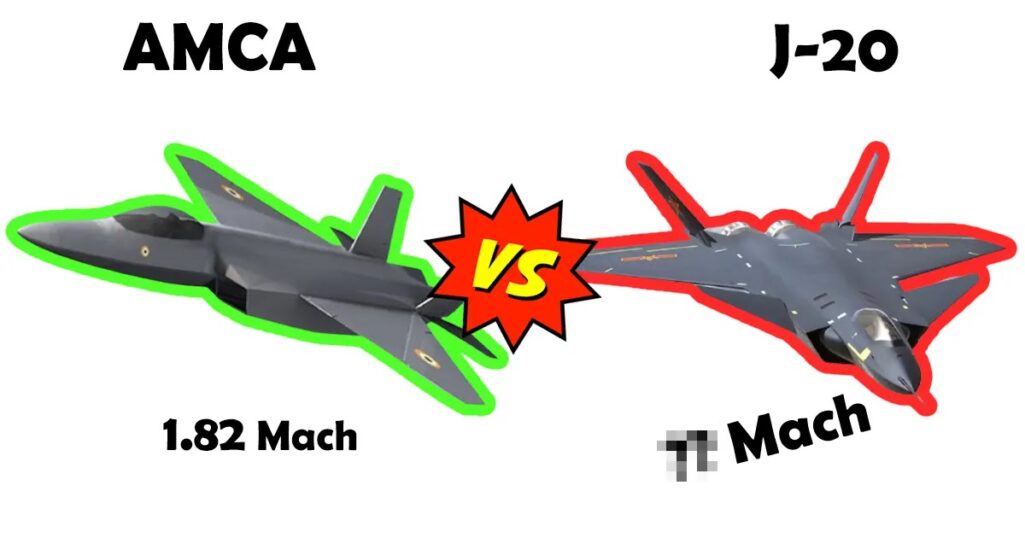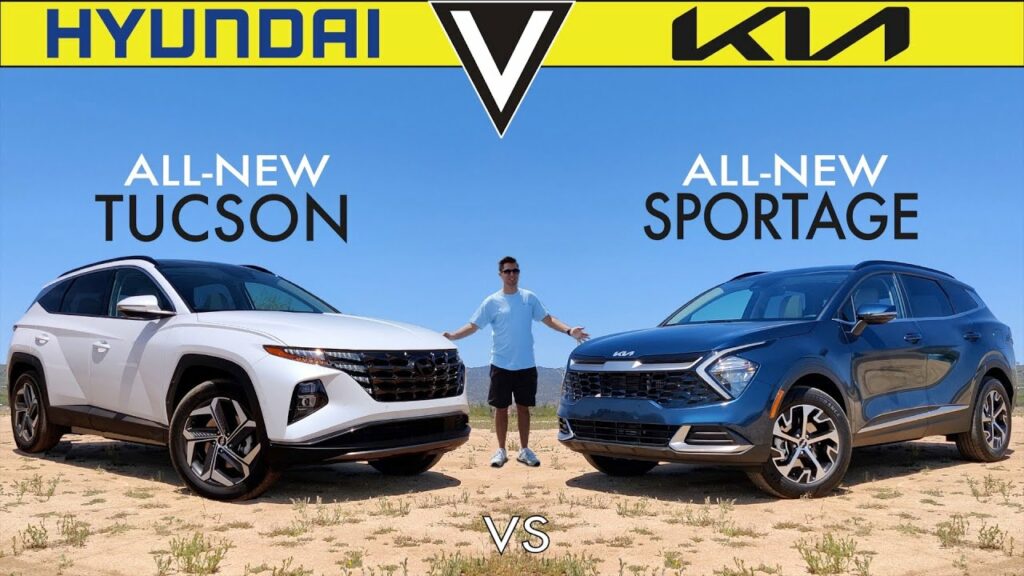
Although the Sportage and Tucson are both excellent family SUVs and are priced similarly (it’s crucial to note that Hyundai and Kia are both a part of the same corporation), each offers a unique perspective on the genre. Oh, and if you’ve only ever seen the name written and never heard it spoken, Tucson is pronounced “too-sun,” not “tuckson.”
Such vehicles have frequently supplanted hatchbacks to take the lead as the preferred means of transportation for families since they are cost-effective to operate, practical, have acceptable handling, and provide a significant amount of comfort. Here, we compare the models side by side to assist you in selecting the best option.
A Quick Comparison: Hyundai Tucson vs Kia Sportage
| Hyundai Tucson | VS | Kia Sportage |
| $28,585 | MSRP | $26,290 – $37,090 |
| 2.5L, 4 Cylinder (Gasoline Fuel) | Engine | 2.5L, 4 Cylinder (Gasoline Fuel) |
| 187 hp | Horsepower | 187 hp |
| 178 lb-ft @ 4000 rpm | Torque | 178 lb-ft @ 4000 rpm |
| 8-Speed Shiftable Automatic | Transmission | 8-Speed Shiftable Automatic |
| All Wheel Drive, Front Wheel Drive | Drivetrain | All Wheel Drive, Front Wheel Drive |
| 25 / 32 / 28 mpg | MPG (City / Highway / Combined) | 25 / 33 / 28 mpg |
| 5 seats | Seating Capacity | 5 Seats |
| 80.3 ft3 | Cargo Space | 74.1 ft3 |
| 2,000 lbs (907.1 kgs) | Towing Capacity | 1,653 lbs (749.7 kgs) |
| Front 41.4 in (1.05 m) Rear 41.3 in (1.04 m) | Leg Room | Front 41.4 in (1.05 m) Rear 41.3 in (41.04 m) |
| Front 38.1 – 40.1 in (0.96 – 1.02 m) Rear 39.0 – 39.5 in (0.99 – 1.00 m) | Head Room | Front 37.8 – 39.6 in (0.96 – 1.00 m) Rear 38.0 – 39.4 in (0.96 – 1.00 m) |
Light To Pocket: Hyundai Tucson vs Kia Sportage
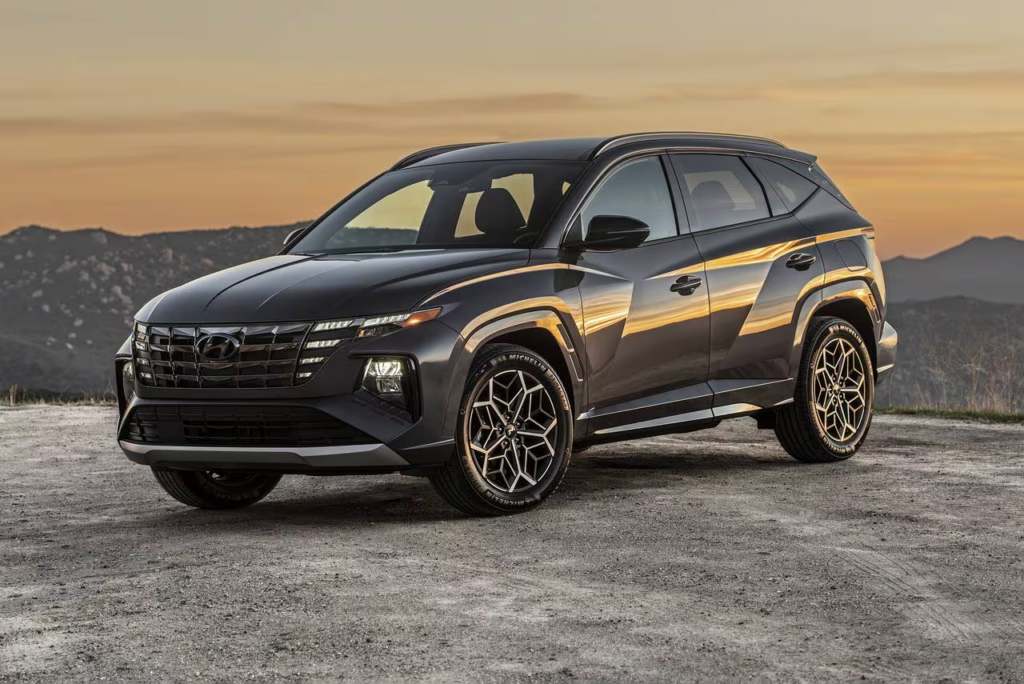
The entry-level SE model with front-wheel drive on the 2024 Tucson makes a compelling case for value as well, with prices starting at just $28,585. There is also a standard infotainment system with an 8-inch touchscreen. The fully equipped Limited model, which is the top of the five trim levels, costs $37,660. All trim levels of the cars have all-wheel drive.
The Sportage, which has been updated for 2024, is the less expensive option at $27,000 est. An extensive range of standard driver aid and safety systems, front-wheel drive (with all-wheel drive as an option), and an infotainment system with an 8-inch touchscreen and wireless Apple CarPlay and Android Auto capabilities are all included in the base LX model. Seven trim levels are available, with a $36,790 maximum starting price.
Performance Battle: Hyundai Tucson vs Kia Sportage
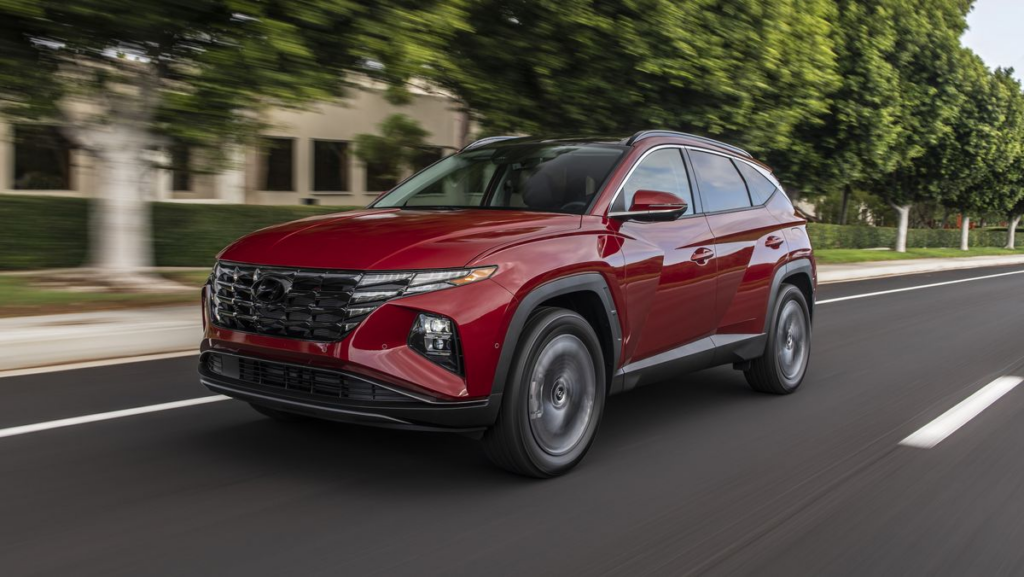
There are three engine choices for Tucson purchasers. Hyundai offers a four-cylinder, 2.5-liter naturally aspirated engine with 187 horsepower and 178 lb-ft of torque for use with just gasoline. An eight-speed automatic transmission transfers power to either the front wheels as standard or all four as an option.
The following two hybrid vehicles are a plug-in and a full hybrid. Both replace their existing engines with a 1.6-liter gas turbocharged engine and an electric motor. The PHEV uses a larger 13.8-kWh battery pack as opposed to the conventional hybrid’s 1.49-kWh battery pack.
Both come with AWD as standard and in an unusual choice, Hyundai opts for a six-speed automatic transmission rather than a CVT. The PHEV increases that output to 261 horsepower from the hybrid’s combined 227 hp. Both engines can generate up to 258 lb-ft of torque.
As you might anticipate, the Sportage‘s selection of drivetrains is nearly identical to that of the Tucson. The standard engine is a 2.5-liter nat-asp four-pot; the two hybrid configurations are offered on some trim levels.
One significant distinction is that the Sportage hybrid is available in both FWD and AWD versions. However, the PHEV still just has paws. These two are identical unless you have your heart set on a front-drive hybrid.
Style And Color: Hyundai Tucson vs Kia Sportage
As a result, both vehicles have sleek, contemporary designs, with Tucson‘s multi-layered, geometrically sculpted front lights—which occupy a large portion of the radiator grille—standing out as its most distinctive feature. The side bodywork has some quite pronounced pressed wrinkles as well.
Four various hues of grey/silver, two types of red (one plain, one iridescent), two shades of white, one pearlescent black, and teal are all available for the Hyundai Tucson. Solid (i.e., non-metallic) red is the default color, whereas solid white costs additional money, around $373.88, and the other colors cost $828.79.
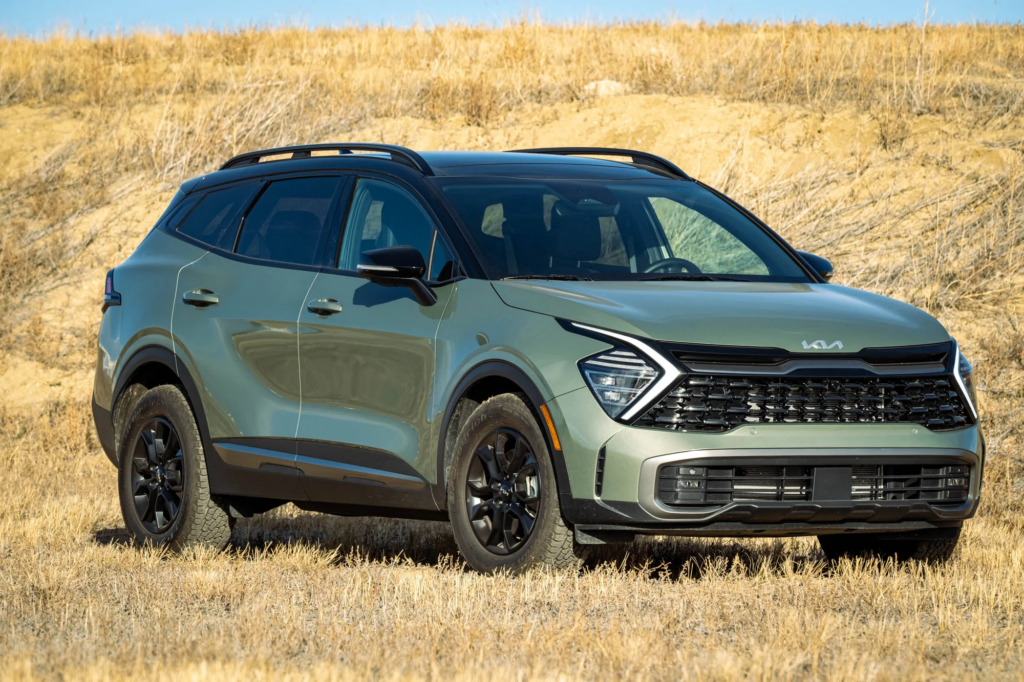
Not to be outdone, the Sportage‘s style is equally impressive. The radiator grille and air intakes dominate the front-end design, and the arrow-shaped headlights curve halfway up the hood.
With regard to the Sportage, there are fewer color options available: yellow is the base color, while white, grey, black, and green are $810.10 extras.
Fuel Economy: Hyundai Tucson vs Kia Sportage
Starting with a front-drive 2.5-liter engine, the Tucson achieves 26 mpg in the city, 33 mpg on the highway, and 29 mpg overall. Choosing AWD reduces those figures to 24/29/26 mpg.
Making the switch to the conventional hybrid greatly improves efficiency, with the lower-trim Blue achieving 38 mpg overall. Higher trims get 37/36/37 mpg, which is a little less than the lower trims.
The Tucson PHEV gets a combined rating of 35 mpg, or an equivalent rating of 80 mpg, when pure electric driving is taken into account. Hyundai claims that it can travel 33 miles on only electrons.

The Sportage falls behind its Hyundai brother by 1 mpg in terms of pure gasoline efficiency. So the front-drive version gets 25/32/28 mpg, while the AWD version gets 23/28/25 mpg.
The disadvantage works in the electrified vehicles’ favor. The lower-trim Sportage Hybrid with FWD from Kia has an exceptional 42/44/43 mpg rating. The Tucson achieves the same overall 38 mpg rating when AWD is specified.
As of the time of writing, Kia had not made the Sportage PHEV’s official fuel economy numbers available. However, we do know that it should be able to travel 32 miles in EV mode.
The Sportage Hybrid FWD is the most fuel-efficient model available if that is what you’re after. For everything else, it comes pretty darn close to being a wash.
Dimension And Spaciousness: Hyundai Tucson vs Kia Sportage
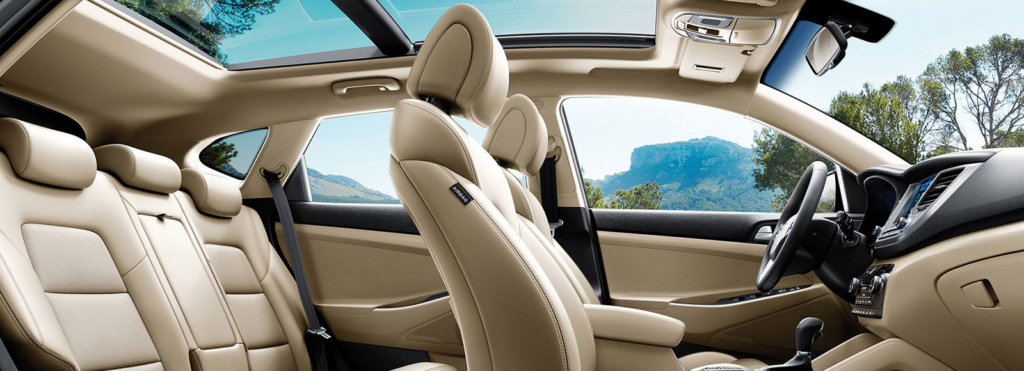
The inside of the Tucson is cool and relaxing as the top part of the door panels wrap around the base of the windshield and then flow down the dashboard. Also carefully incorporated into the design are hidden air vents. The key controls are kept within easy reach via an elevated center console with a shifter.
Lower trims come equipped with fabric, mid-level trims get leather, while top trims include both heat and ventilation up front. The Tucson features one of the roomiest interiors in its class thanks to a lengthy 108.5-inch (2,756 mm) wheelbase. There is a generous front headroom of 40.1 inches (1,019 mm) and 41.4 inches (1,052 mm) of legroom.
With head and legroom measuring 39.5 and 41.3 inches (1,003 and 1,049 mm), the back is hardly any less roomy. A panoramic sunroof is an option on higher levels, reducing headroom to 38.1 inches in the front and 39.0 inches in the back (968 and 991 mm). Inches of front and back headroom are also lost in hybrid vehicles.
Compared to the Tucson, the Sportage‘s interior is a little bit more angular and technologically advanced. There isn’t much of a dashboard design to look at because the infotainment screen and instrument panel are both housed under a single curved panel.
However, large vents with chrome rings are striking. Many controls are located in the center console, which either has a rotary dial for hybrid vehicles or a typical shifter stalk for gas-powered vehicles.
The front and rear headroom measurements are 39.6 inches (1,006 mm) and 39.4 inches (1,001 mm), respectively. The Kia features significantly less rear hip room, less shoulder room in both rows and slightly more front hip room. The Sportage loses headroom with the moonroof and the hybrid, just like it does with the Tucson.
Cargo And Towing Capacity: Hyundai Tucson vs Kia Sportage
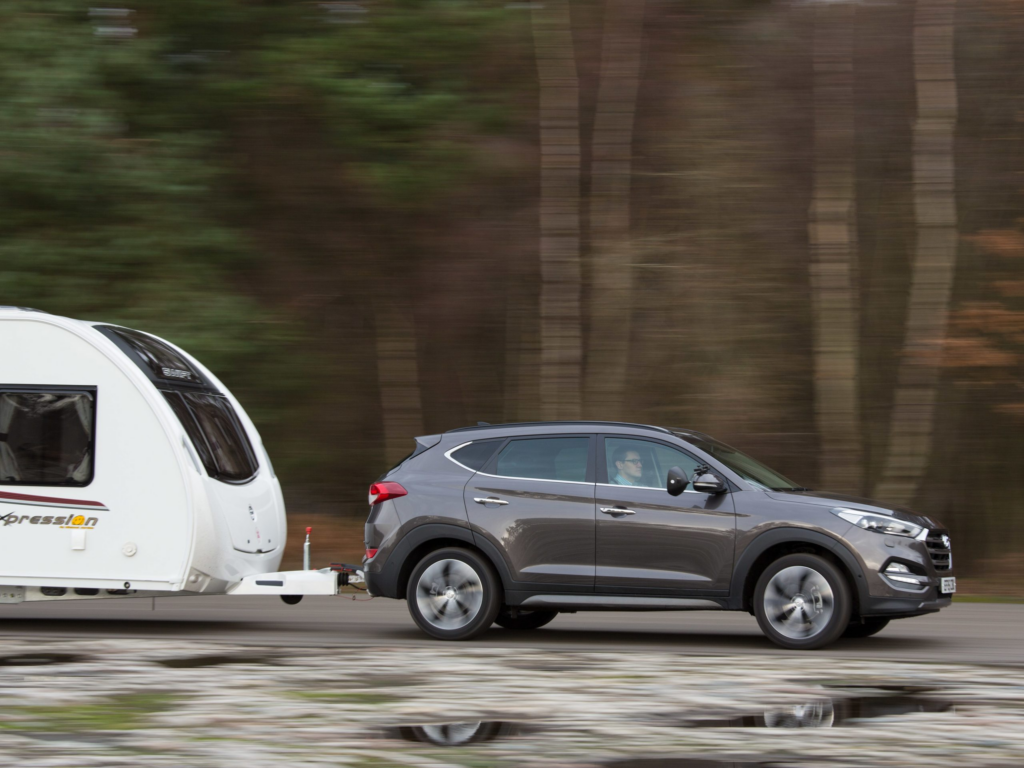
The Tucson has a sizable 38.7 cubic feet (1,096 L) of storage volume in gas form. And that is with the seats up; if you fold the second row down 60/40, you have an additional 80.3 cubes (2,274 L) of storage space. If you choose the hybrid, that amount is reduced to 74.5 cu ft (2,110 L), which is still a lot.
No matter the drivetrain, the Tucson’s maximum towing capability is 2,000 lbs (907 kgs).
The Sportage features a segment-best 39.6 cu ft (1,121 L) of cargo space in its extraordinarily enormous hatch. When the seats are removed, the volume increases to 74.1 cu ft (2,098 L), a little shy of its brother. A very minor reduction occurs when switching to the hybrid, to 39.5 and 73.7 cu ft (1,119 and 2,087 L, respectively).
The maximum amount that may be towed is 1,653 lbs (750 kgs).
Interior And Tech: Hyundai Tucson vs Kia Sportage
An 8.0-inch touchscreen with wireless Apple CarPlay and Android Auto is standard on all Tucson models. Larger 10.25-in (260 mm) screens come with higher trims, but strangely, wireless phone mirroring is lost. Keyless entry, two USB ports, and 17-in (432 mm) alloy wheels are all included in the standard equipment.
Behind the wheel, an optional 10.25-in (260 mm) LCD serves as the instrument panel. Touch can be used on the sizable panel below the touchscreen.
A hands-free power liftgate, a wireless charger, dual-zone climate control, and other luxuries are available to purchasers depending on trim. A mid-range Bose audio system also appears. The Limited/Ultimate is the top model and comes equipped with heated rear seats, memory seats, a panoramic glass roof, an around-view monitor (with lane-view), and other features.

The Sportage and Tucson have the same infotainment setup: an 8.0-in (203 mm) screen as standard with wireless phone mirroring and a 10.25-in (260 mm) screen with a cord as an option. In lesser trims, the instrument panel has a sizable (and generally uncustomizable) screen; however, starting with the mid-tier trims, the screen increases somewhat and offers an entire range of customizations.
The Sportage utilizes a smaller switchable panel that requires a poke to switch between the climate and music controls instead of a bigger touch-sensitive area.
As you move up the model level, the Sportage, like the Tucson, throws up a wide selection of extra tech delights. There are heated back seats, a clever motorized tailgate, and a Harman Kardon (not Bose) audio system.
Notable is that the Kia is the first Korean automaker to offer USB-C connections, which are cleverly located on the front seatbacks where they are simpler for children to use.
Safety Features: Hyundai Tucson vs Kia Sportage
Both the Hyundai Tucson and Kia Sportage come equipped with the necessary safety equipment to earn high safety ratings, but the Tucson has slightly higher Insurance Institute for Highway Safety (IIHS) safety ratings than the Sportage (Good or better in every category, except headlights, which are Acceptable vs. Poor).
The National Highway Traffic Safety Administration (NHTSA) also awarded the Hyundai Tucson a five-star overall safety rating for front-wheel-drive variants and a four-star rating for all-wheel-drive models.
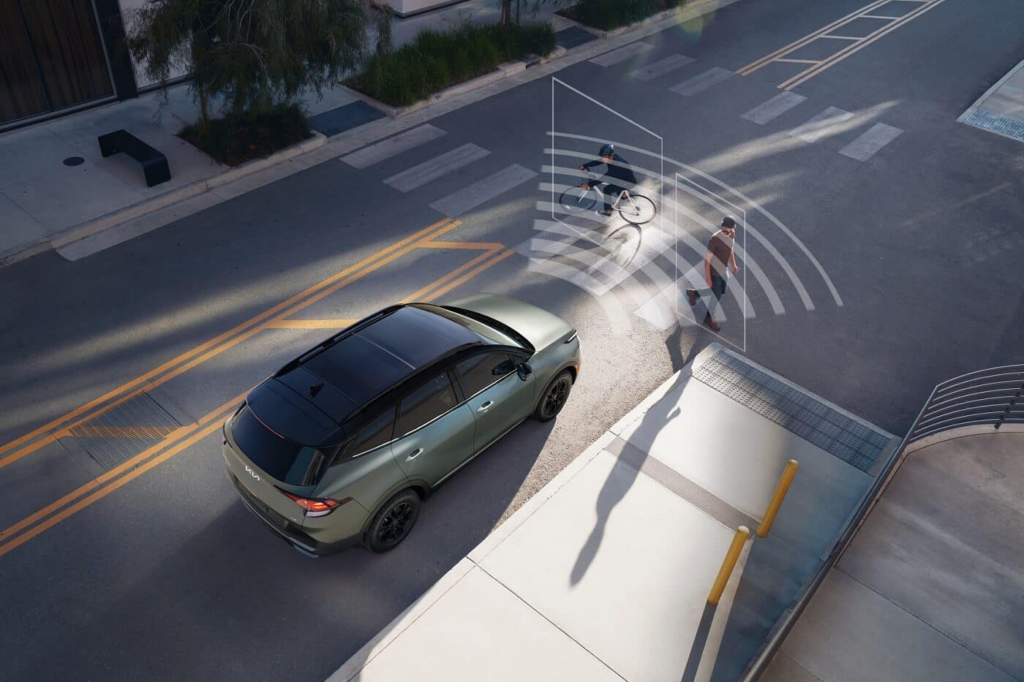
The NHTSA has not yet tested the Sportage in a crash, but it boasts several of the same standard safety systems, including front collision warning, lane-keep assistance, and driver attention monitoring.
Just like 2023 Tucson, 2024 Tucson also offers common safety features like adaptive cruise control and blind-spot monitoring. Because of this, it received the highest safety rating and was named the Best New Car for Teens in 2023.
Driving Comfort: Hyundai Tucson vs Kia Sportage
The Tucson and Sportage are very much focused on prioritizing comfort, while other SUVs are designed to appeal to experienced drivers with precise steering and firm suspension. This is advantageous because SUVs are more suited to casual driving than to spirited driving.

While the Tucson’s suspension is just a tiny bit softer than the Sportage’s, you would have to test both vehicles side by side to see a significant difference. However, both are superb highway cruisers because of their smooth and quiet running characteristics.
Which SUV Is Better, Tucson or Sportage?
Both the Hyundai Tucson and Kia Sportage provide adequate room and comfort for drivers and passengers to enjoy the ride while being more than capable of tackling weekend road trips and city excursions.
However, the slightly larger SUV—the 2024 Hyundai Tucson—offers a greater maximum load space, more comfortable seats, more standard safety equipment, and a better ride.
The newly redesigned 2024 Kia Sportage is still deserving of consideration even though it didn’t beat the Tucson. With a cheaper starting price, it has a sleeker interior and high-tech amenities. Limiting your options can be helpful occasionally. Before choosing one of these two compact SUVs, we, in this instance, advise exploring the entire segment. And that’s exactly what we’ve done!
FAQs
Is Kia Sportage better?
Modern SUVs, the Kia Sportage and Hyundai Tucson, are comparable in many respects, particularly under the hood. The Kia Sportage, on the other hand, has extra standard advantages like a 12.2-inch digital instrument display and more safety features. The Sportage is considered to be a “better” SUV by many drivers due to its higher hybrid MPG ratings.
Is the Kia Sportage bigger in size?
The Sportage is a little larger, but their dimensions are almost comparable. In comparison to the 2022 Hyundai Tucson, which is 182.3 inches long, 73.4 inches wide, and 65.6 inches tall, the 2023 Kia Sportage is 183.5 inches long, 73.4 inches wide, and 65.4 inches tall.
Which has more horsepower?
The horsepower ratings for the Kia Sportage and Hyundai Tucson are the same. They have a 2.5-liter, four-cylinder engine that has 187 horsepower. A 1.6-liter turbocharged four-cylinder hybrid powertrain with 227 horsepower provides environmentally friendly propulsion, while its plug-in hybrid alternatives provide 261 horsepower.



